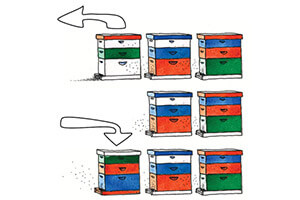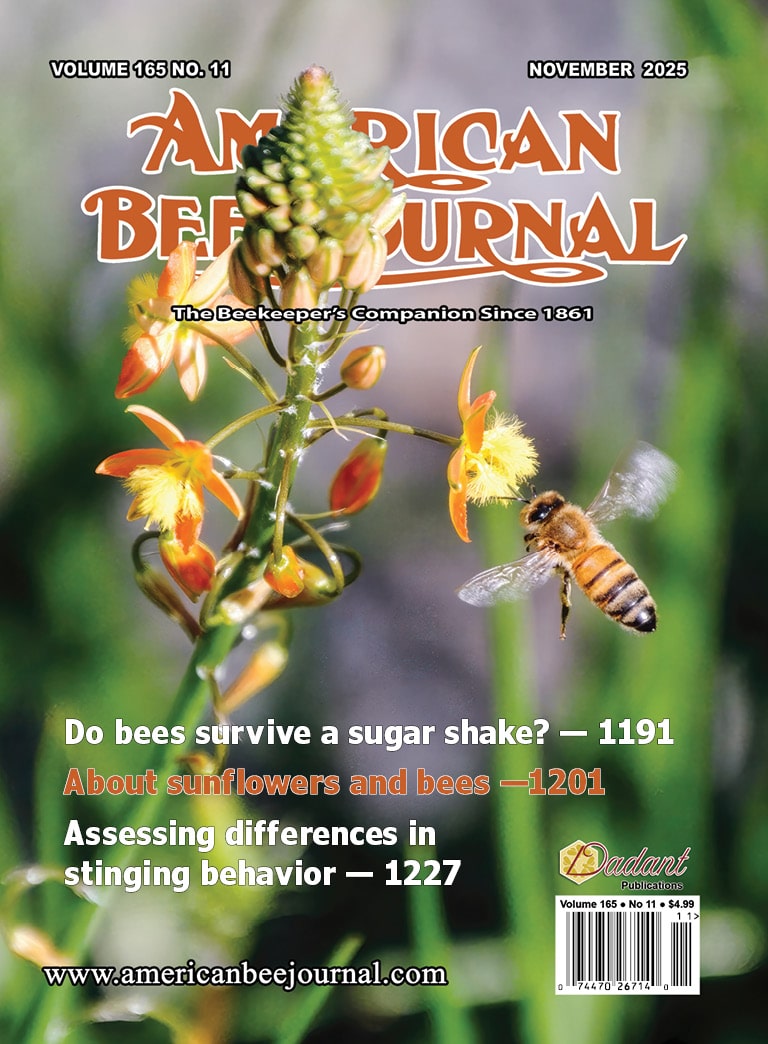
In this, my fourth and final installment in a mini-series on colony health, I want to focus on how epidemiology, the science of disease spread and virulence in populations, can inform honey bee health management. As so many of the boundaries in biology exist only in the minds of human observers, there is some overlap with last month’s column. Where, for example, does social immunity (last month) end and epidemiology (this month) begin?
I would say social immunity is focused on the colony and the within-nest adaptations the superorganism has made to resist parasites and pathogens. These are the five steps of increasing engagement I represented in Figure 1 of my February installment. Epidemiology, in contrast, focuses on the movement and virulence of parasites at a scale of space or time – ecology or evolution. How can beekeepers capture benefits at this scale? I think it is possible, and that’s what this aricle’s about.
The ecological scale. To begin, let’s focus on the ecological drivers of disease and parasite virulence – the factors that operate at a landscape or population scale. Of these factors, host density ranks at the top. Since at least 19271 it has been understood that high host population densities are associated with virulent epidemics. Much of this understanding has been gained in the context of human epidemics in high-density urban centers2,3, but it is obvious that the principles apply equally to high animal densities and the highly-congested nests of social insects. The reason high host densities are so conducive to epidemics is the fact that dense host populations have higher probability of harboring diseased individuals4 and higher contact rate between infected and uninfected individuals.5
Epidemiologists frequently use so-called SIR models to understand how a disease moves through a population. This method designates members of a host population as susceptible (S), infected (I), or recovered and immune (R).6 As probability of moving from S status to I is higher in a dense population with high transmission rates, this is yet another reason why density promotes disease. As I said last month, beekeepers should minimize apiary densities to the extent possible (see side bar).
Another ecological factor that drives disease is high rates of demographic turnover in host populations. If there is regular input of new individuals into a population, from the perspective of the pathogen these constitute a steady supply of new susceptible (S) hosts. Theory predicts that demographic host turnovers like this can prolong epidemics beyond what would happen if the epidemic simply burned through the population’s S individuals.7 This speaks directly to the seemingly innocent practice of replacing dead-outs in an apiary (Fig. 1). To the extent these deaths are caused by communicable disease agents or mites, a fresh nuc or package imported from elsewhere and set down in the dead-out’s place constitutes fresh, new S hosts and promotes the long-term presence of the pathogen. Here again, science is giving us a clue to sustainable disease management.
Host population complexity is another ecological factor that regulates disease dynamics. To the extent a population is genetically homogeneous there is a higher likelihood that it is homogenous for genes coding for extremes – in our case, either disease resistance or disease susceptibility. A homogeneous population in which disease resistance genes are rare is vulnerable to novel epidemics, the possibility of which fuels concerns about the genetic homogeneity of some of the world’s most important food crops.8 The honey bee nest, like in other social insects, is a highly-dense environment, and this may be one of the evolutionary drivers for queen polyandry – multiple mating – which results in a colony whose workers have numerous fathers and heightened gene diversity.9 It has been shown that colonies headed by highly polyandrous queens have lower levels of brood disease10 and Varroa mites.11 For these reasons I have long advocated for the need for research on optimizing queen mating number in commercial queen production, in part because we know that colony benefits occur when queens are instrumentally inseminated at drone rates higher than those normally occurring in nature.11 We need to be thinking how we can capture the benefits of hyperpolyandry for commercial beekeeping.
Another ecological consideration happens at the scale of the pathogens themselves, the “community of pathogens” that competes for single hosts. In terms of disease, this is known as mixed infections. The honey bee colony is a teeming collective of species ranging from macroscopic mites and insects to microscopic bacteria, viruses, yeasts, and microsporidia that make a living off of, or inside, the bees. Many of them are nest scavengers and relatively harmless; some, such as the diverse community in the honey bee gut, are highly beneficial to the health and well being of the bee.12 When it comes to multiple pathogens, however, the outcomes are usually not …


